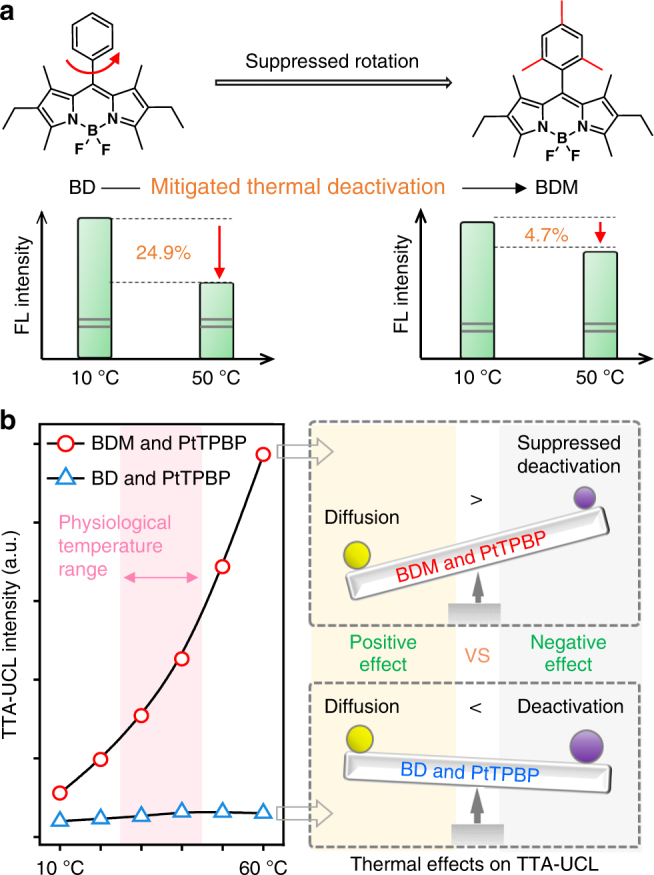Fig. 2.

Strategy for achieving highly positive thermal response in a TTA system. a The structure modification and thus suppressed thermal deactivations of fluorescence. b The temperature responses of TTA-UCL signals emitted from BDM & PtTPBP and BD & PtTPBP, respectively. When negative deactivation effect is suppressed, the positive diffusion effect becomes more powerful to give a positive temperature-response trend with high sensitivity. A 635 nm laser (100 mW cm−2) was used as the excitation source. The concentrations of BDM, BD, PtTPBP, and l-ascorbyl 6-palmitate in nujol solvent were 1×10−3 M, 1×10−3 M, 5×10−5 M and 1 mg mL−1, respectively
